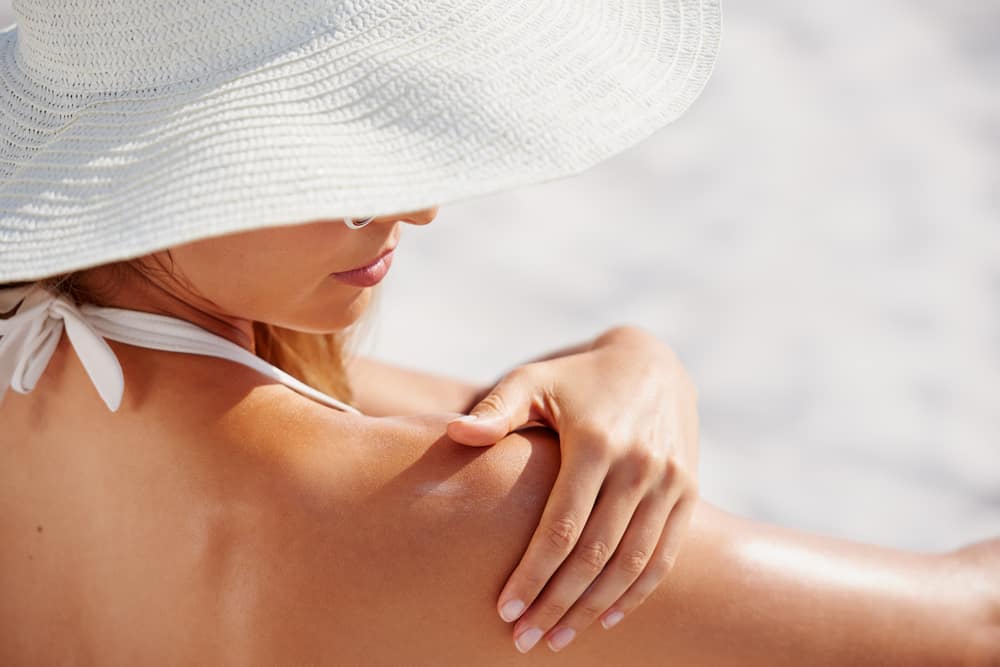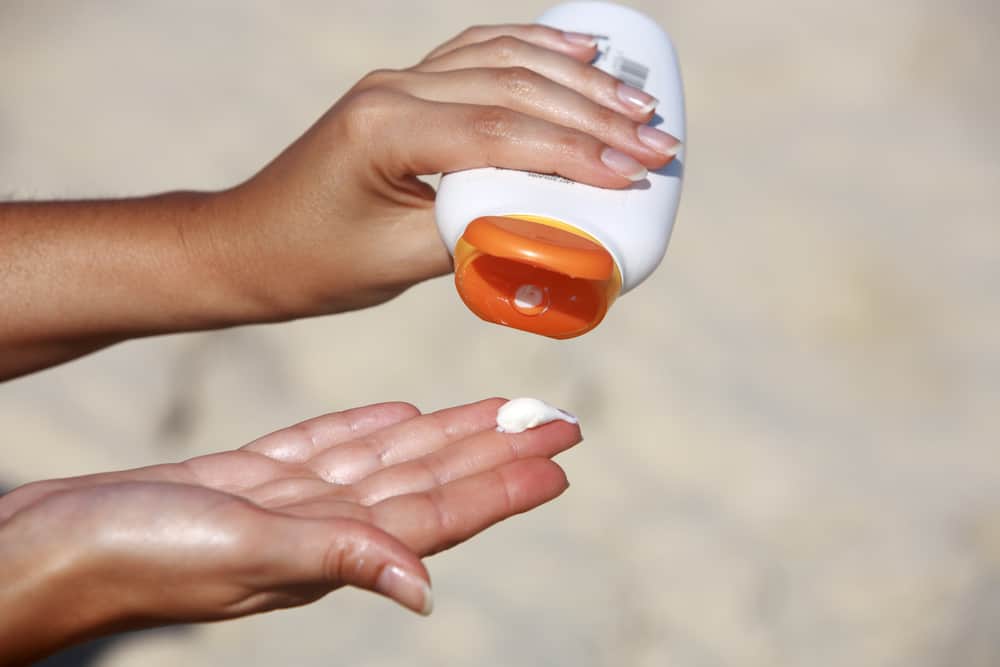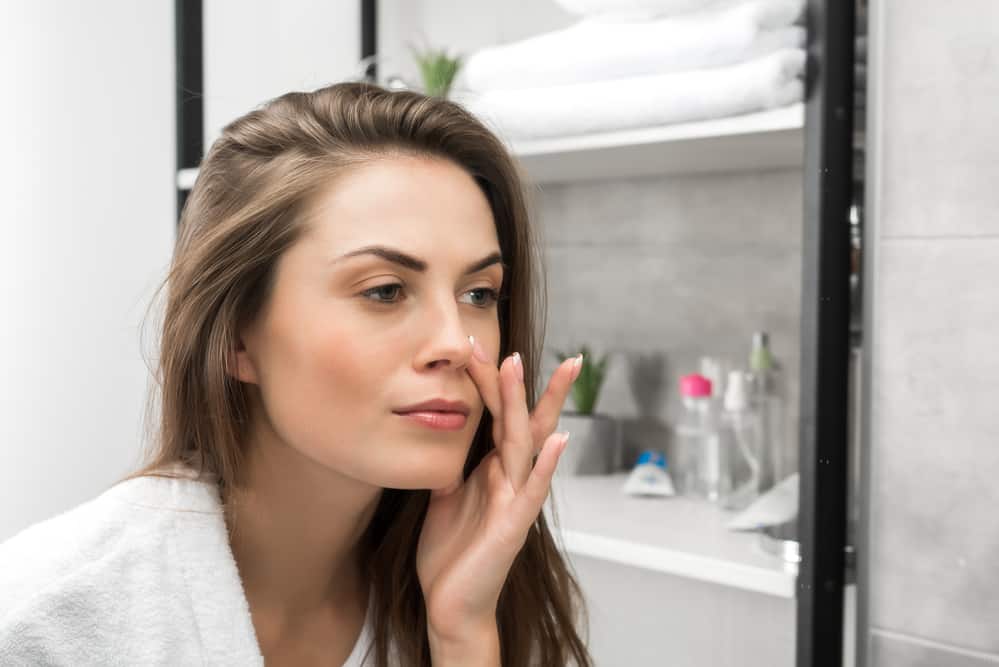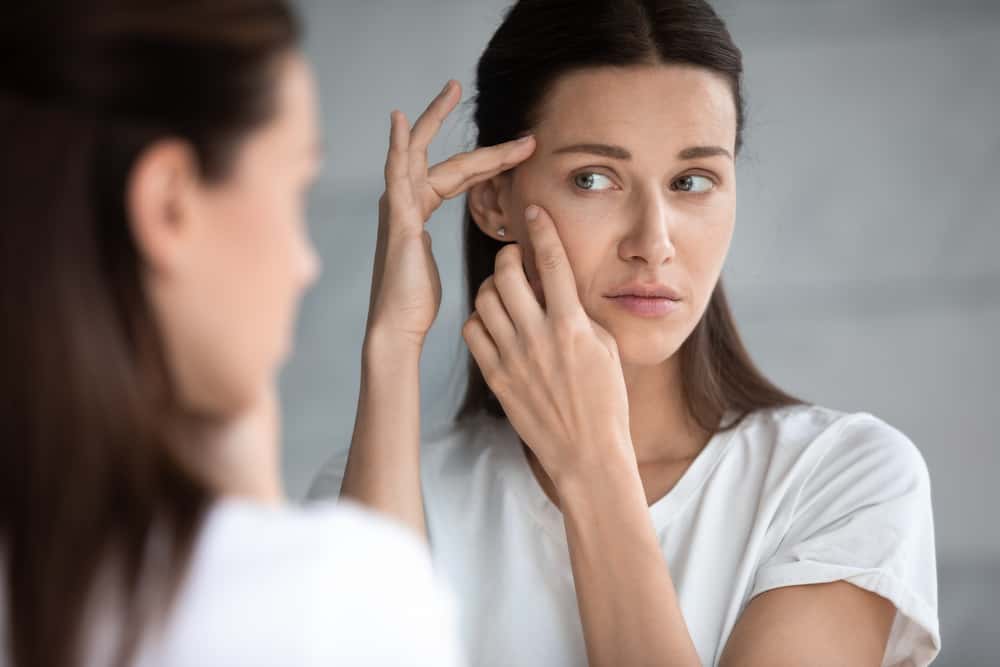
Most people like the way they look when they tan and will go to great lengths to get a dark skin color.
Some people tan quickly, and others take some time.
Everyone’s skin is different and has a different reaction to the sun.
It’s important to understand that repeated sun exposure can cause sunburn, skin damage, and premature aging.
It can also increase your chances of developing skin cancer.
If you must tan, make sure you are using the proper precautions and do not tan excessively.
If you have noticed that you are no longer tanning like you used to, there could be many different reasons your skin has changed.
Why Am I Not Tanning Anymore?

The most common reason people stop tanning or no longer get any darker while tanning is that they hit something called a tanning plateau.
This is simply your body’s darkest skin tone possible.
Everyone has their own tanning plateau, and the amount of time it takes you to reach it can vary.
Other reasons you may not be tanning properly include age, health conditions, the products you are using, and the time of day that you go tanning.
It can sometimes be hard to tell if you are not tanning because you hit your plateau or just need to change something in your tanning routine.
Understanding the different factors that affect tanning can help you adjust that routine so you can continue to tan and get the dark shade you want while also staying safe and not putting yourself at risk for skin damage or skin cancer.
1. Tanning Plateau

Everyone has a tanning plateau that they will eventually hit.
No matter how much you have been tanning or how long you have been tanning, you will eventually get to a point where you can no longer get any darker.
Your body may adjust to this plateau with time, and while you may notice you achieve a darker tan the more you spend time in the sun, you will still eventually hit a plateau.
There is no way around this obstacle, and you will just have to be satisfied with your color.
People who have darker skin naturally usually have a higher plateau, but their tans can also be less noticeable.
Once you reach your tanning plateau, you can try different things to see if you can get around it.
You may want to start using different tanning lotions or bronzers to help darken the skin to take it to the next level.
You can also try different types of tanning.
If you normally tan indoors, you can step outside in the sun to see if you tan any better.
If you tan outside, you can try using a tanning bed to see if it can get you to a darker shade.
If you are not happy with the level of tan you achieved at your tanning plateau, you may want to consider getting a spray tan.
A spray tan can look nice over your base tan, and it can take you a little darker to help you get your desired look without risking the health of your skin.
2. Too Much Sunscreen

Sunscreen is a good thing and can help protect your skin from sunburn and premature aging and reduce the risk of developing skin cancer.
It can also prevent you from getting the tan you want.
It’s a good idea to use sunscreen no matter how dark you are or want to be, but the type of sunscreen you use and its strength may need to be adjusted as your skin starts to darken and you spend more time outside or in a tanning bed.
A higher SPF sunscreen will protect your skin better and longer, but this isn’t always needed if you want to tan.
You should start with a higher SPF sunscreen until you develop a base tan or feel as if it is safe to go out in the sun for short periods without the risk of burning.
You can then reduce the SPF to a lower number.
This will allow the sunscreen to still protect your skin from damage, but it will allow some UV rays to be absorbed by the skin so you can get a proper tan.
When you lower your sunscreen usage to tan, you will need to monitor your skin and avoid being outside during the hottest parts of the day or for long periods.
Even with sunscreen, sun exposure can increase your risk of skin cancer.
3. Outdated Bronzer

Bronzers are popular products for both indoor and outdoor tanning.
Bronzers are activated by the sun or the bulbs of a tanning bed, and they work to darken the skin faster and ensure the tan is absorbed into the skin.
Bronzers are usually applied as lotions or sprays, and they can even be added to tanning oils and sunscreens.
There are often different types of bronzers made for the type of tanning you want to do.
Bronzers designed for indoor use may not work as well outside, and those designed for outside use may not work as well in a tanning bed.
Bronzers can go bad, but it can be hard to notice if your product is good or not.
If your lotion or bronzer doesn’t have an expiration date, you may struggle to keep track of how long you have had it.
Once the bronzer goes bad, it will no longer be as effective and won’t give you a dark tan as you want.
You should replace your bronzer every six months to ensure it is working properly.
Outdated bronzers can also cause skin reactions such as rashes or burning.
If you notice any of these things when using a bronzer, it may be time to replace it.
4. Base Tan

While a base tan is recommended for anyone interested in any type of tanning and will help the skin naturally adjust to the sun or UV rays, they can also prevent you from tanning.
A base tan is a tan that develops on the skin through small sessions of tanning.
If you are new to tanning or have very light skin, you should avoid exposure to the sun or UV rays in long sessions.
Instead, you will want to spend just a few minutes in the sun or tanning bed each day.
Monitor your skin closely, and be sure to stop tanning before you start to burn.
This darkens the skin, so you can eventually stay in the sun longer and get a better tan.
Once your base tan develops, though, it can be harder to tan.
The tanner you are, the harder it is to tan more.
It can also be less noticeable when you have a base tan and start to tan.
Once you have developed a nice base tan, you might want to start staying out in the sun longer, adding a few extra minutes to your indoor tanning sessions, or using a bronzer or another tanning product to help you get the results you want.
5. Dehydration

Your body needs plenty of water to function, and if you are dehydrated, your skin will suffer.
Not only is dehydration dangerous for your body, but it can also be dangerous for your skin if you are tanning regularly or want to tan.
When your body is dehydrated, your skin starts to dry out.
This makes it more susceptible to damage and less likely to tan.
Your skin may start to become dry, scaly, and thin.
You may notice it starts to peel off or become flaky and falls off.
This can also occur if you have a sunburn.
Drinking plenty of water can help keep your skin healthy, so you are less likely to suffer from sun damage if you are tanning.
It can also ensure your tan lasts longer.
Applying lotion to the skin will also help reduce flaking and peeling and could help your tan last longer.
If you suffer from dehydration, you should up your water intake.
You can also find drinks that are designed to prevent dehydration.
Any time you plan to go out in the sun to tan or are planning to go to a tanning bed, be sure to drink plenty of water both before and after you tan to improve the way you feel and the way you look.
6. Schedule

The timing of your tanning can play a big role in how well you tan.
If you have recently changed your schedule, it could be the reason you are no longer tanning or tanning well.
The sun is the brightest and strongest during certain times of day, and those times can vary throughout the year based on your location.
The best time to tan is usually late morning to early afternoon when the sun is at its highest in the sky and shining down on the earth.
You may need to adjust your schedule, so you can tan outside during the best parts of the day.
Experiment with different times to see if you notice any changes in your tan or if your tanning seems to improve.
If you are doing indoor tanning, you might need to add some more time to your tanning session.
You may have started with short sessions of 10 minutes or less.
You can increase your time by five minutes each week until you reach 20 minutes.
It’s best to avoid tanning for more than 20 minutes each day, but some types of tanning beds are safe enough to use longer.
7. Dry Skin

Dry skin is a problem that affects millions of people.
Some people don’t pay attention to the condition of their skin and don’t even realize it is dry.
If your skin is not healthy, it simply won’t tan.
Even if you can tan your dry skin, it will likely become damaged, flaky, and scaly and fall off easily.
If you have ever had a bad sunburn and noticed your skin is starting to peel, the likely reason is that it got too dry and simply started to fall off your body.
While you certainly want to avoid sunburns at all costs, sometimes your skin can peel even if you have a slight tan.
This will cause you to lose the darkest layer of your skin, and it can make it seem impossible to see results or keep your tan.
The best way to avoid dry skin is to apply a moisturizer to your skin daily or even twice a day.
If you are using tanning products, make sure they do not contain any ingredients that could be causing an allergic reaction or drying out your skin even more.
Try to use products that have moisturizers built in.
You can also talk to your dermatologist about the different options for dry skin.
Some dry skin treatments can leave your skin sensitive, so if you start any type of prescription topical creams, be sure to ask the dermatologist or doctor if it’s safe to tan while using it.
8. Lack Of Melanin

Melanin is produced naturally by your body to protect your skin from the sun.
It helps to form a base tan and barrier, so you are less likely to burn.
Some people have more melanin in their bodies than others, and some also produce it faster and in larger quantities.
People with darker skin usually produce more melanin than those with lighter skin.
As you age, your body tends to produce less melanin, which makes it harder to tan.
Certain skin diseases and medications can also cause your body to stop producing melanin and make you more vulnerable to sunburns and less likely to tan.
If you think your body may not be producing melanin as it should or as it was, you can talk to your doctor about your options.
Some medications can help the body naturally produce melanin so you can tan better and keep your tan longer.
Some supplements can help your body produce melanin so you can stay safe from sunburn and develop the tan you desire.
9. Skin Disorders

There are some skin disorders and autoimmune diseases that affect the skin and prevent it from tanning.
Some of these diseases can be treated with medications, but these same medications can make you even more sensitive to the sun.
If you suffer from scleroderma, lupus, skin cancer, vitiligo, or rosacea, your skin may not tan well.
You may notice it becomes blotchy and red when you are in the sun.
You may burn, but that burn may never turn into a tan.
If your skin has been damaged due to an accident or injury, it may also have scar tissue that will not tan.
These conditions can worsen in time and cause you to stop tanning like you once did.
You may be able to talk with a dermatologist to see what treatment options are available to you and whether or not there is any way to improve your chances of achieving a proper tan.
If you have not been diagnosed with a skin condition or disorder but are not tanning, you may want to discuss your concerns with your doctor.
You may have a skin condition or another health problem that prevents you from tanning but has not yet been diagnosed.
10. Medications

Multiple medications on the market could be interfering with your body’s ability to tan.
Sometimes these medications are used to treat skin conditions, and other times they are medications that treat other unrelated issues.
Medications affect everyone differently, so even if your medication does not list skin problems or sun sensitivity as a common side effect, your medication could still be the reason you are not tanning.
If you seem to become red when you step in the sun and burn but never tan, there’s a good chance your medication could be causing the sensitivity.
You can talk with your doctor to find out if this is the reason you are not tanning and to learn about different options.
If tanning is important to you, your doctor may be able to switch your medication to a lower dose or a different brand.
It’s not recommended to ever stop taking medication just so you can tan.
The benefits of your medication will outweigh the benefits of tanning.